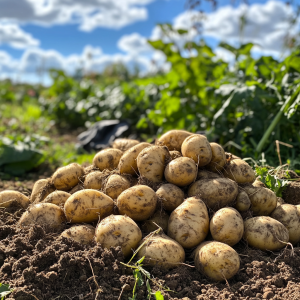
Potatoes ready for freeze-drying
I recently learned about Chuño: The Incan Secret to Potato Immortality while doing some research for my reference book, “Neanderthals in the Kitchen”, so I’m going to share the fascinating information I learned with you today.
Have you ever wondered how to make your potatoes last longer than your New Year’s resolution? Allow me to introduce you to chuño, (pronounced CHOON-yoh) the Andean answer to potato preservation that’s been around since before the Incas were building Machu Picchu. This isn’t your average bag of potato chips – we’re talking about the original “set it and forget it” meal prep that turns ordinary spuds into essentially potato jerky.
Let’s take a journey to the high-altitude wonderland of the Andes, where the air is thin, the nights are frigid, and the potatoes are… well, everywhere. It’s here, in the harsh climate of Peru and Bolivia, that indigenous peoples perfected the art of making chuño thousands of years ago. And let me tell you, these folks were not messing around when it came to food preservation.
The process of creating chuño is deceptively simple, yet it’s a testament to human ingenuity in the face of challenging environments. It starts with spreading out potatoes on the ground – think of it as tucking your tubers in for a very long, very cold nap. As night falls and temperatures plummet, the potatoes freeze solid. But the fun doesn’t stop there! When morning comes and the sun rises, our potato popsicles begin to thaw.
For the traditional chuño-making process, the nighttime temperatures need to be quite cold, with specific requirements that make the Andean highlands an ideal location. The nighttime temperature should drop below 0°C (32°F), ideally reaching around -5°C (23°F) or colder, and these freezing temperatures need to occur consistently for several nights in a row. During the day, temperatures should rise above freezing, allowing the potatoes to thaw, creating a crucial freeze-thaw cycle. These temperature swings occur naturally in the Andean highlands due to the high altitude, with the process typically taking place at elevations of 3,800 meters (12,500 feet) or higher. The chuño-making season in the Andes is usually during June and July, which are the coldest months in the Southern Hemisphere, providing the perfect conditions for this ancient preservation technique.
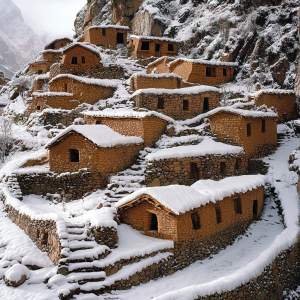
Incan village 2000 years ago
Now, here’s where things get interesting (and a bit brutal, if you’re a potato). The partially thawed spuds are then stomped on by human feet. Yes, you read that right – it’s like a grape-stomping party, but with less wine and more starch. This potato abuse serves a purpose, though: it helps squeeze out excess moisture, which is key to the preservation process.
This freeze-thaw-stomp cycle continues for about five days. It’s like a potato boot camp, where only the strong survive. After this ordeal, the potatoes are left to dry completely in the intense high-altitude sun for another 10-15 days. The result? A wrinkled, ghostly potato mummy that could probably survive the apocalypse.
But why go through all this trouble? Well, chuño isn’t just a novelty – it’s a nutritional powerhouse that has sustained Andean populations for millennia. While the freeze-drying process does cause some nutrient loss, chuño retains much of the potato’s caloric value and is particularly rich in potassium as it retains most of its minerals. Plus, it can last for years without refrigeration. That’s right – years. It’s the ultimate “revenge of the carbs” story – what doesn’t kill the potato makes it stronger, and apparently, nearly immortal.
In Andean cuisine, chuño is a staple ingredient, used in traditional dishes and relied upon during lean times. It’s the original emergency food, long before freeze-dried ice cream was invented for astronauts. And while it might not win any beauty contests with its shriveled appearance, its cultural significance and practical applications are undeniable.
Now, you might be thinking, “This is all very interesting, but I don’t live in the Andes, and my HOA probably wouldn’t approve of me spreading potatoes all over my lawn.” Fear not, potato preservers! The principles behind chuño can be adapted for modern use. While you won’t get the exact same result without the unique Andean climate, you can experiment with freezing potatoes and then dehydrating them using modern appliances. It won’t be authentic chuño, but it’ll be a nod to this ancient technique.
For the preppers out there, chuño represents more than just a quirky food preservation method. It’s a reminder that sometimes the old ways are the best ways. In a world obsessed with high-tech solutions, there’s something refreshingly simple about this time-tested process. It doesn’t require electricity, special equipment, or a degree in food science – just patience, some chilly nights, and a willingness to stomp on your food.
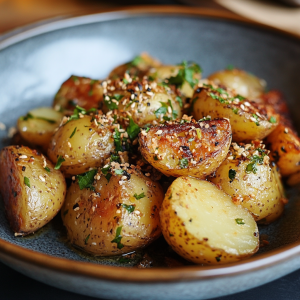
DIY freeze-dried potatoes
So, the next time you’re scaling the Andes, preparing for the zombie apocalypse, or just looking to impress your friends with obscure food trivia, remember chuño. It’s proof that with a little creativity and a lot of stomping, you can turn a humble potato into a survival superfood. Who knows? In a post-apocalyptic world, chuño might just be the new currency. Forget gold – in the future, the richest people might be those with the most wrinkled potatoes.
In all seriousness, chuño is a fascinating example of how indigenous knowledge can provide valuable solutions for long-term food storage without modern technology. It’s a technique that has sustained populations through harsh winters and lean years, and its principles could be invaluable for those seeking to live off-grid or prepare for emergencies. So next time you look at a potato, remember its potential. With the right conditions and a bit of foot work, that humble spud could become a time capsule of nutrition, ready to sustain you through whatever challenges lie ahead. When the chips are down (pun intended), chuño will rise to the occasion.
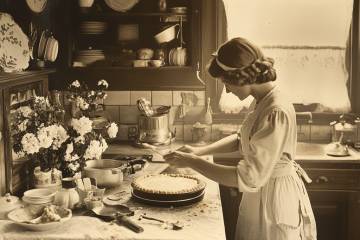
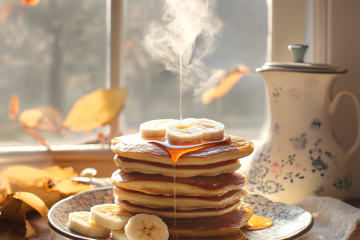
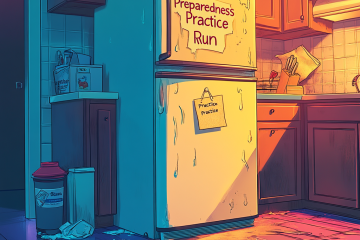
2 Comments
Nola Borrego · August 20, 2024 at 7:05 pm
Are you the original Preparedness pro from years ago who did cannng demos? I have been hoping she would come back on
Preparedness Pro · August 22, 2024 at 10:12 am
Yep, that’s me!
Comments are closed.